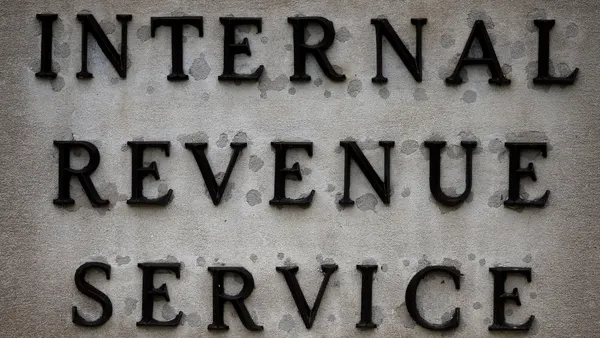Bob Stark is global head of market strategy for Kyriba. Views are the author's own.
Bitcoin’s chaotic ride should be a wakeup call to CFOs and corporate risk managers. But not for the reason you think.
Corporate CFOs are largely staying away from privately issued alt coins such as Bitcoin, Ethereum and Tether because of their price volatility. Although more than 2,000 U.S. businesses — including AT&T and WeWork — accept Bitcoin, according to Fundera, none of these organizations are holding cryptocurrencies on their balance sheets. They are converting to fiat currencies daily (or intra-day in some cases) to avoid being caught holding a devalued digital currency.
The remainder of organizations that wish to attract crypto-centric customers use intermediary payment processors such as BitPay, which translates cryptocurrencies to fiat currencies or gift cards in real-time for shoppers to purchase goods and services. These businesses have similar interests: they are not in the business of digital currencies and don’t want to be risking their hard-earned revenue and cash flow to uncontrolled price movements in the currencies they transact in.
This argument will sound familiar to CFOs and treasurers. Their mandate is to minimize the impact of financial risks so investors can be exposed to the business risk and not to increases or decreases in earnings due to currencies (digital or otherwise). Digital currencies are hard to protect against because the derivatives market is not fully developed, the utility of cryptocurrencies is limited, which reduces the opportunity to construct natural hedges, and the process of converting into fiat currencies is frictional, lacking the automation or liquidity that treasury teams have come to expect for standard currencies.
And yet, while all these liquidity and hedging levers exist for finance teams, many CFOs aren’t very good at protecting their balance sheets from (fiat) currency volatility. A quarterly study recently reported organizations lost more than $9.5 billion in earnings due to currency headwinds in Q1 of 2021. In the trailing six months, this totals more than $16 billion in lost value. How is this possible?
The problem is not the inability to protect cash flows and assets from price volatility. Unlike with digital currencies, those structures work well for fiat currencies. The issue is visibility. CFOs do not have sufficient transparency into their cash flows and balance sheets to be able to hedge effectively, whether constructing natural hedges or going to the derivatives markets. As a result, forecasted cash flows are left unprotected and balance sheet accounts, captured within the depths of their ERP software, are vulnerable to every currency movement.
Fortunately, there are relatively easy solutions to perfect visibility so better data-driven risk management programs can be implemented:
-
Cash Forecasting. Like the credit crisis of 2008 before it, the pandemic once again taught CFOs that cash and liquidity are critical to business survival. CEOs and boards demanded constant reporting on enterprise liquidity, which drove daily accounts payable, customer collections, and financing decisions. Forecasts were challenged by the uncertainty of cash conversion and working capital, increasing the difficulty of presenting a reliable cash forecast. Unfortunately, many finance teams lacked full automation, resorting to spreadsheets to consolidate data, model multiple liquidity scenarios, and assess the accuracy of forecast reporting. Ideally, the extrapolation, modeling – both rules-based and via machine learning – and detailed variance analysis to deliver a complete enterprise liquidity picture would be delivered through one open platform instead of multiple systems. The desired result would be a cash forecast that can be relied upon at least 13 weeks out, clearly identifying problem areas and action items – including where hedging opportunities exist to protect future cash flows. An actionable enterprise forecast can be solved with the right data-driven strategy and an open liquidity platform.
-
Balance sheet currency exposures. Any C-level executive will tell you that the hidden danger is in what you don’t know. This applies to currency exposures too, because risk managers can only protect the currency exposures in the balance sheet that are visible to them. You may see a balance sheet account in your ERP that reports a USD (if that’s your base currency) balance but understanding the multiple translations of foreign denominated assets and liabilities to construct this balance is the challenge to be overcome. The process is complicated but can be simplified by having intelligent automation to identify, extract, understand, and present the detailed exposures that lurk below the surface. Finding meaning within the data enables finance teams to make decisions – whatever those may be. Some will hedge some or all their exposures; others will implement business process changes to create better currency alignments and natural hedges. A handful of CFOs will not hedge at all, but they can do so knowing exactly what currency exposure they manage so they can set expectations with corporate stakeholders. Information is power, meaning that the opposite is true. Lack of information about currency exposures leaves the CFO powerless.
There is certainly similarity in the underlying reasons why the majority of CFOs do not want cryptocurrencies on their balance sheets: they want to be able to remove the uncertainty of price movements. It is ironic that the same CFOs have much work to do to protect the same balance sheets from fiat currencies as well.












